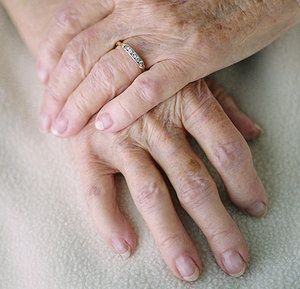Physical Exam 101: The Hands
By Douglas R. Briggs, DC, Dipl. Ac. (IAMA), DAAPM
I am sure you are familiar with the old adage: "When the only tool in your toolbox is a hammer, everything starts to look like a nail." The idea is that you can become so focused on the thing you do that you forget there are other options out there ? other tools in the toolbox.
As chiropractic physicians, it becomes very easy to focus on the spine and direct all our attention there. Where does it hurt? Where is the paraspinal swelling? Where is the joint dysfunction? What is the irritated nerve root
But the problem quicky becomes that we can miss much more information about our patient if we do not take the time to assess the whole person. As primary care, physician-level providers, we are responsible for recognizing that our patient is a whole body ? not just a spine.
Consider the Big Picture
For example, a patient presenting with wrist pain may be quickly diagnosed with carpal tunnel syndrome by the orthopedic surgeon. I have seen many patients who were diagnosed with or had surgery for carpal tunnel, but never addressed the problems farther up.
On the other hand, a chiropractic physician may very well recognize neck and shoulder components to the condition causing radicular symptoms down the path of the median nerve. But what about the elbow? Overuse strain of the forearm extensors can easily cause pain, limited motion, and irritation along the path of the median nerve. I have also seen patients with radicular arm pain who never had their elbow evaluated or addressed at all.
 Remember, the body is an integrated whole. I recall my acupuncture mentor saying, "Anything can cause anything." Keep an open mind and be willing to step outside of the box.
Remember, the body is an integrated whole. I recall my acupuncture mentor saying, "Anything can cause anything." Keep an open mind and be willing to step outside of the box.
An Example: The Hands
One of the fascinating aspects of traditional medicine is the attention to seemingly random physical details. Much can be learned from simple observation of the body. The hands are a wonderful example:
Palm color ? The color of the center of the palm suggests systemic body disorders: red ? circulation; purple ? respiratory and reproductive; dark ? excretory; yellow ? liver and gallbladder functions. If the palm is rigid and tight, this can be a sign of underactive digestive and circulatory functions.
Spacing between the closed, flat fingers is recognized as a sign of nutritional deficiencies and an imbalance in the physical constitution.
Holding the palms together and pushing the elbows up (reverse Phalen's test), you should be able to get your wrists to a right angle. If not, this is a sign of stress and tension.
The wrist crease. Swelling at the wrist crease on the palmar side can also suggest metabolic issues. Below the thumb ? disorders of the lungs or large intestine; in the middle ? disorders of circulation and the reproductive system; below the pinkie ? disorders of the heart and small intestine.
The nails: The shape and contour of the nails (naturally, without polish) can also give great insight into constitution:
- Vertical ridges suggest imbalanced nourishment.
- White dots on the nails shows the body has been in a state of sugar elimination.
- Horizontal indentations or splitting suggests a major dietary change.
- Rounding of the nail and bed suggests lung and breathing issues.
- Squaring of the nail and bed may signify high blood pressure.
- Bumps across the nails is seen as a sign of intestinal parasites.
- Grooving also suggests malnutrition from poor diet.
There is much more detail we could go into on this topic, but the above should show how much you can infer from some quick, simple observation of the body. Of course, these methods were developed long before we had modern diagnostic techniques ? no responsible practitioner today would formally diagnose high blood pressure simply from the shape of a fingernail. However, we can gain great insight into a person's overall condition if we take the time to look. Other diagnostic testing may then be very reasonable and appropriate. As always, be sure to take the time to document your observations, impressions and treatment plan.
Resources
- The International Academy of Medical Acupuncture: www.iama.edu.
- Kushi M. How to See Your Health: Book of Oriental Diagnosis. Japan Publications, 1980.
- Ohashi W. Reading the Body. Penguin Arkana, 1991.
- Wild DB. The Skin, Tongue, and Nails Speak. Unique Perspective Press, 2012.







